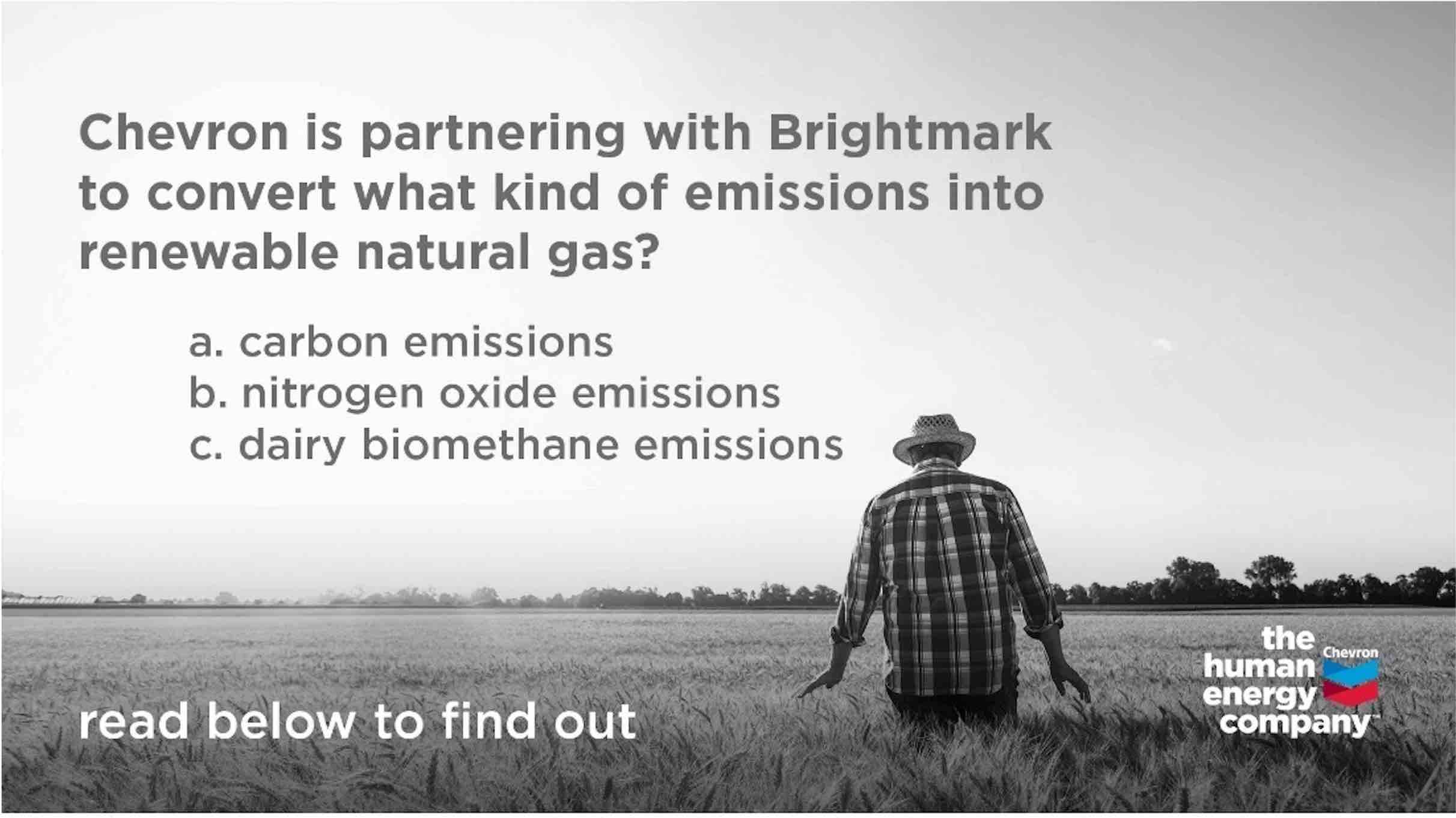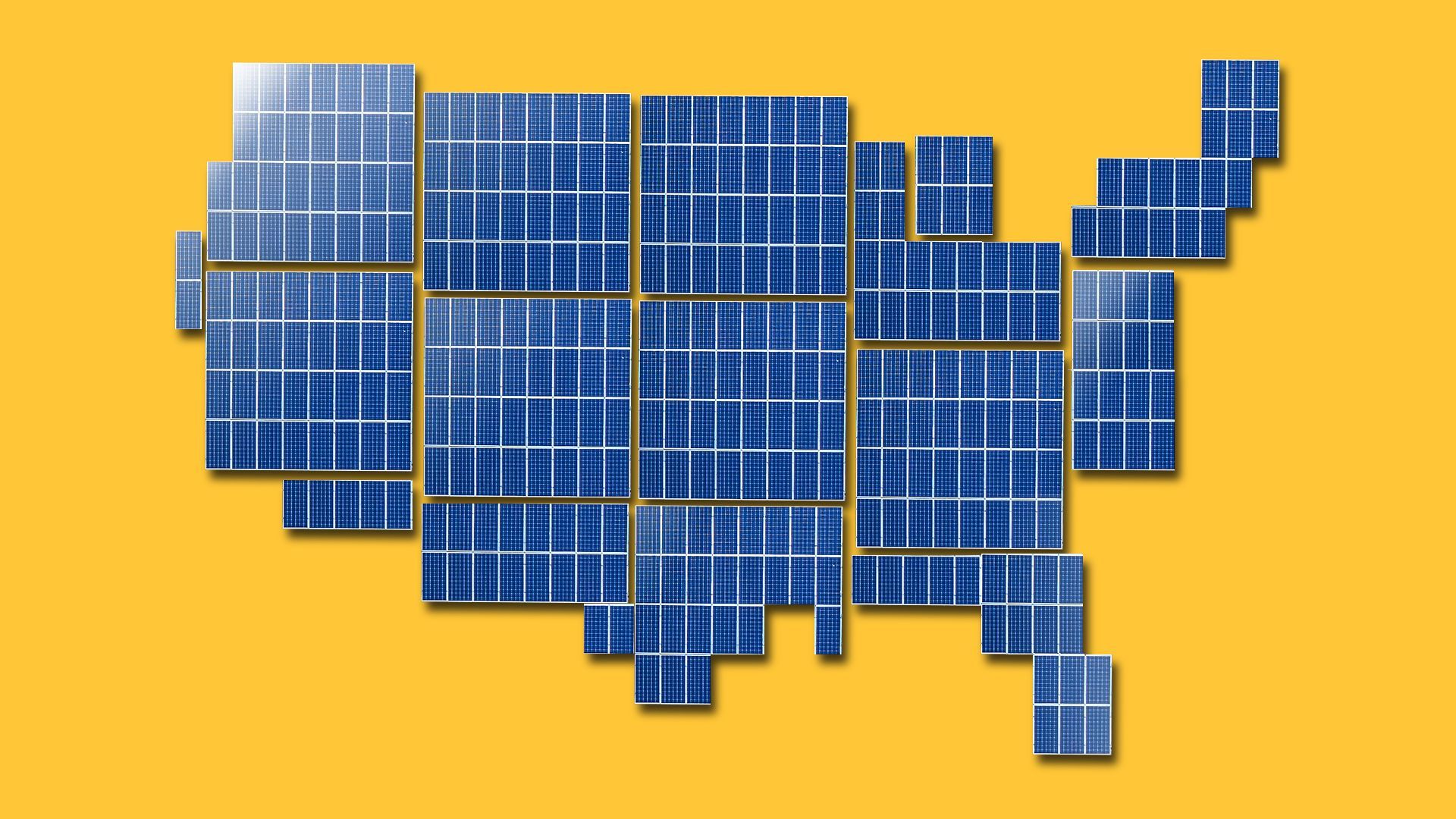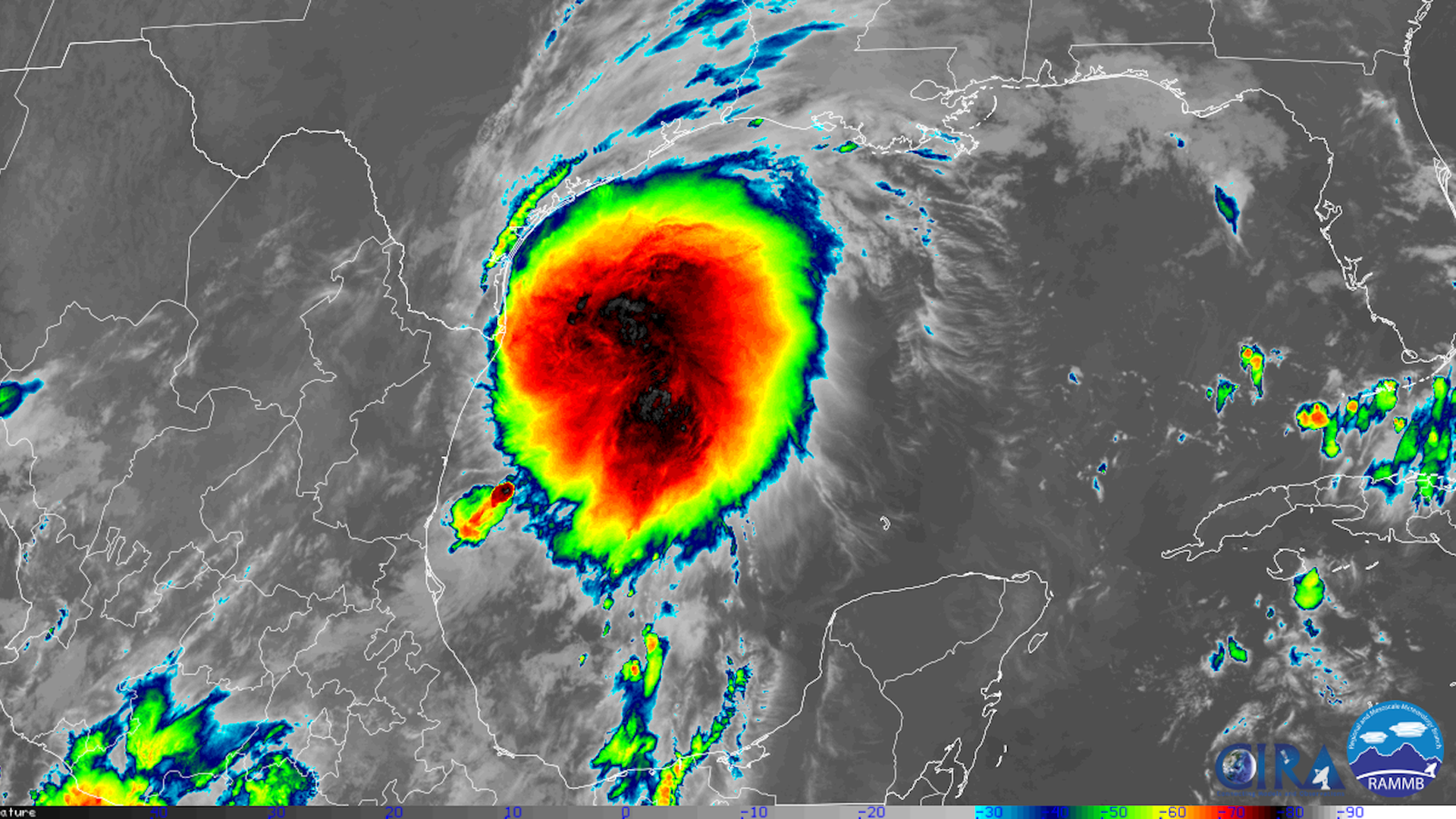| | | | | | | Presented By Chevron | | | | Axios Generate | | By Ben Geman and Andrew Freedman ·Sep 13, 2021 | | ☀️ Good morning. Today's Smart Brevity count is 1,391 words, 5.5 minutes. 📊 Data point of the day: $235 billion, the estimated 10-year cost of House Democrats draft package of clean energy tax incentives. We have more below. 🎶 50 years ago the late Aretha Franklin ruled Billboard's soul charts with her brilliant version of today's intro tune... | | | | | | 1 big thing: Ad wars intensify as Democrats' plans take shape |  | | | Illustration: Aïda Amer/Axios | | | | Environmentalists and industry groups are launching fresh media buys as congressional Democrats craft plans to expand green energy incentives and spending while imposing new or higher fees on oil companies, Ben writes. Driving the news: The League of Conservation and Climate Power has begun $6 million in new TV and digital ad spending that try to bolster four Senate Democrats and around 20 House members. - The ads (like this one) aim to show that Democrats supporting the plans, several in competitive districts or states, help boost jobs and cut pollution.
- Separately, the American Clean Power Association — a renewables and battery storage industry group — this morning announced the next phase of its ad campaign with TV and digital spots in seven states and Washington, D.C., that together cost seven figures.
- The American Petroleum Institute (API) is beginning the latest installment of its own seven-figure campaign. The industry group is fighting plans it says will erode U.S. energy security and raise costs, including a new fee on methane emissions and repeal of longstanding tax deductions.
The big picture: The latest ads arrive amid wider advocacy battles and efforts to sway politically vulnerable lawmakers as Democrats look to move a multitrillion-dollar package of major health care, social safety net, and energy and climate measures. - It is, as Bloomberg notes, a "lobbying frenzy" as key votes loom in coming weeks. The contours of Democrats' plans will come into greater focus this week with votes in multiple House committees.
- The political path this fall is extremely fraught as Democrats look to move the package on razor-thin party-line votes in concert with the smaller bipartisan infrastructure package.
- But Politico has some interesting reporting on how liberal interest groups have been more than holding their own in recent weeks in the ad wars over the Democratic legislation.
Why it matters: Energy pieces of the Democrats' brewing legislation — and to a lesser degree the bipartisan plan — are vital to the White House goal of cutting U.S. greenhouse gas emissions in half by 2030. The fate of the effort will influence the success or failure of a critical United Nations climate summit this fall. Zoom in: The new, jobs-focused American Clean Power Association TV ads backing the two bills are launching in seven states including West Virginia and Arizona. Sens. Joe Manchin (D-W.Va.) and Kyrsten Sinema (D-Ariz.) likely hold the fate of the Democrats' efforts in their hands, and the ads say the legislation will create jobs in their states. One reason the path is so dicey is that Manchin has signaled he'll only support a much smaller price tag for the overall bill. The other side: The latest API ads look to rally opposition in Pennsylvania and Arizona to the Democratic legislation. This ad looks to sway Rep. Tom O'Halleran, a swing district Democrat in Arizona. "As prices on everything rise, politicians D.C. want to increase the cost of American-made energy," it states. |     | | | | | | 2. The stakes of John Kerry's trip to India |  Data: International Energy Agency; Chart: Thomas Oide/Axios Special Climate Envoy John Kerry is in India to try to bolster bilateral and multilateral efforts ahead of the critical U.N. climate summit this fall, Ben writes. Driving the news: The State Department said Kerry will meet with government and private sector officials to "raise global climate ambition and speed India's clean energy transition." Why it matters: India's carbon emissions have climbed a lot this century (see chart above) and energy demand will keep rising. |     | | | | | | 3. House Dems lay down their clean energy marker | | A lot of info surfaced since our last edition about what House Democrats want to include in the multitrillion-dollar budget reconciliation plan they hope to move on a party-line vote, Ben writes. Driving the news: House Ways and Means Committee Democrats dropped the 645-page draft Friday night and it's stuffed with energy and climate provisions. Some takeaways... 1. It's a mix of new and old. The package extends key renewable power tax incentives into the early 2030s before they phase down. But it tweaks those in several ways. - That included domestic content requirements, a bid for union support via higher credits for projects that pay prevailing wages, and new incentives for solar projects in low-income communities.
- It also would add several new incentives, such as one aimed at continuing the operation of existing nuclear plants and another for "clean" hydrogen.
- There's also a new credit for homes and businesses to cut wildfire exposure.
- There are also expanded incentives for carbon capture and removal, including provisions to boost nascent direct air capture tech deployment.
2. It goes big on EVs, but there's drama already: The plan would hugely expand consumer electric vehicle purchase incentives, but with a catch. - The maximum credit is now up to $12,500 (it's currently $7,500), but nearly all of the extra incentive only applies to union-made cars, which helps Detroit automakers.
- Toyota, in a statement, said it discriminates against non-union workers, and via Reuters, Honda has similar complaints.
- Beyond that, the plan also removes the per-manufacturer cap of 200,000 vehicles that can receive the full EV credit. This would help both Tesla and General Motors, which have already reached the limit.
3. It's written in pencil: Ways and Means is marking up the bill this week. But equally (if not more) importantly, the bigger question is what happens in the Senate, where the wider reconciliation package requires support from every Democrat. Read more |     | | | | | | A message from Chevron | | Chevron is exploring renewable energy sources | | |  | | | | Our El Segundo refinery is looking to turn plant-based oil into renewable gasoline, jet and diesel fuels. We're also partnering with Brightmark to convert dairy biomethane emissions into renewable natural gas. Because it's only human to help power a better future. Learn more. | | | | | | 4. A new residential solar push with a justice focus |  | | | Illustration: Annelise Capossela/Axios | | | | A broad coalition is pushing Congress to make a key residential solar incentive more available to the low-income and communities of color, Ben writes. Driving the news: Residential Renewables for All brings together around 350 organizations and individual advocates, including environmental groups, civil rights organizations and renewables companies. - The ad-hoc coalition is formally launching today (although it quietly began in August).
- It includes the National Wildlife Federation (NWF), the NAACP, the Union of Concerned Scientists and Black Owners of Solar Services.
How it works: They want revision a longstanding tax credit for installing home solar systems and some other clean energy tech. - Right now the credit doesn't help low-income people with limited or no tax liabilities, or who cannot wait years, under the current structure, to monetize the value.
- The group wants the credit available as an upfront "direct pay" incentive available regardless of tax liability.
- They estimate that 26 million households, including a combined 6.2 million Black and Latino households, "are unable to benefit...because they do not have sufficient taxable income."
What they're saying: NWF's Mustafa Santiago Ali tells Axios it's one of the ways vulnerable communities can move from "surviving to thriving" by fighting pollution, lowering energy bills, and giving people more control over energy choices. "When we have these types of initiatives in place, giving people the opportunity to have energy democracy, giving people the opportunity to play an active role in the lessening of the impacts and breaking our addiction to fossil fuels, then we have a triple-win situation," Ali says. What's next: Starting this week the group's members will ramp up outreach to lawmakers. They're also working with the Solar Energy Industries Association, a spokesperson said. |     | | | | | | 5. Tropical Storm Nicholas forms and heads for Texas |  | | | Satellite image of Tropical Storm Nicholas on Sept. 13, 2021. (CIRA/RAMMB) | | | | Tropical Storm Nicholas formed Sunday in the southwestern Gulf of Mexico and is forecast to make landfall Monday afternoon as either a strong tropical storm or Category 1 hurricane, Andrew writes. Why it matters: The storm's main threats are heavy rains and storm surge flooding. Surge could reach as high as 3 to 5 feet above the normally dry ground near where the storm moves ashore. - Forecasts call for between 8 to 16 inches to fall from Corpus Christi north into Houston-Galveston — areas that are both major energy hubs — and then spreading into Louisiana.
- A few 20-inch amounts are possible, the National Hurricane Center warns. There is a "high" risk outlook of flash flooding for the Texas coast between Corpus Christi and Houston Monday.
Context: Tropical storms and hurricanes are producing more rainfall as sea and air temperatures increase with global warming. For every 1°C increase in temperature, the air can carry about 7% more water vapor, providing more energy to storms. Details: If any refineries are temporarily taken out of service, it could affect gas prices since there are still outages in the wake of Category 4 Hurricane Ida, which hit Louisiana earlier this month. - As of Friday, three Louisiana refineries were still shut, accounting for about 4% of U.S. refining capacity, while as of yesterday about half of Gulf of Mexico offshore oil-and-gas production was offline.
|     | | | | | | A message from Chevron | | Chevron is exploring renewable energy sources | | |  | | | | Our El Segundo refinery is looking to turn plant-based oil into renewable gasoline, jet and diesel fuels. We're also partnering with Brightmark to convert dairy biomethane emissions into renewable natural gas. Because it's only human to help power a better future. Learn more. | | | | 🙏 Thanks so much for reading and please tell your friends they can sign up for this newsletter for free. We'll see you tomorrow. |  | | It'll help you deliver employee communications more effectively. | | | | | | Axios thanks our partners for supporting our newsletters. If you're interested in advertising, learn more here.
Sponsorship has no influence on editorial content. Axios, 3100 Clarendon Blvd, Suite 1300, Arlington VA 22201 | | | You received this email because you signed up for newsletters from Axios.
Change your preferences or unsubscribe here. | | | Was this email forwarded to you?
Sign up now to get Axios in your inbox. | | | | Follow Axios on social media:    | | | | | |









No comments:
Post a Comment